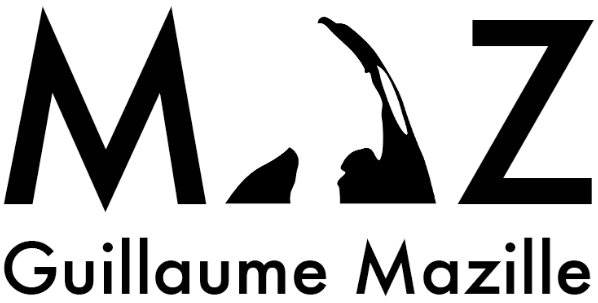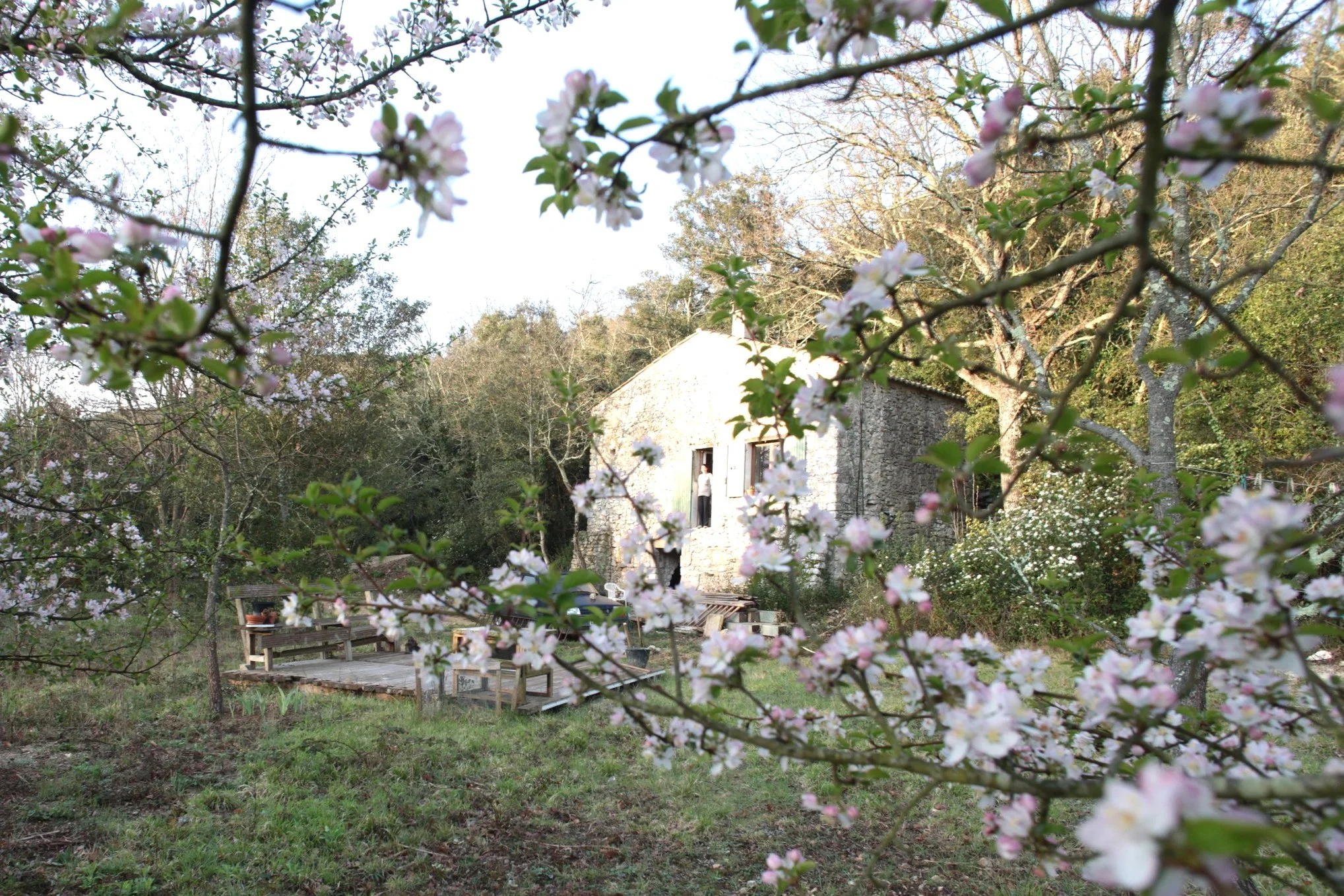behind the shooting
MEETING THE OTTER
“This energy, goodwill and expertise all came together in the unexpected miracle I had always hoped for but never quite believed possible: meeting the otter in my river”.
Unlike the mother beaver, she never wanted us to be friends. Despite years of relentless research, I had never come across her often. But throughout those years, she stood out through her absence - her camouflage skills, as well as her totally anarchic pace of life. This way of living made me in turn clearly rethink my job and my way of being alive; like her, I wanted to be discreet, curious and tenacious.
I came to realise that I was experiencing, at the end of my garden, sensations and adventures that were as strong as those I felt somewhere in Alaska or the South Pacific. Somehow, I felt I was gradually becoming a wild animal again, and despite myself, a naturalist-researcher. I observed new behaviours focusing on small details, and found myself now understanding little things about all sorts of animal behaviours that will probably never be of use to anyone. It was transformative. My personal and professional life were no longer competing: they could make peace with one another.
This realisation came with a new sense that my house was an ecosystem in its own right. What I had discovered at the end of the garden took place in the bathroom, the kitchen, in our walls... All these animals who shared our daily life, and which I previously saw as objects, or merely amusing or bothersome entities, instead became co-tenants; neighbours who were, and always would be, a part of our lives.
diving knowledge
HIGH-TECH from the deep
to the river shallows
At the end of confinement, I was developing 360° boxes which could withstand colossal pressures in order to film undersea in the Mediterranean at a depth of 120m on a separate project. At the shoot, I met Kevin and Marta, two incredible award winning cameramen, as we conducted a complicated expedition with deep dives under the guidance of photographer Laurent Ballesta.
These people, like me, were filming animals on the other side of the planet. But discussing my ideas, and the relationship I was developing with the mother beaver, we were all amazed and inspired by the immediacy of nature and the incredible potential that was hidden right here in our metaphorical – and in my case literal - backyard.
Kevin and Marta agreed to bring back their know-how as divers, allowing us to film in the river with high-tech diving equipment and rebreathers, starting deep work in less than a meter of water.
Ecology .
with Benjamin Allegrini
Benjamin works in environmental studies. He is one of those naturalists who, when he parks his car at your house, points to a tuft of grass and guesses all the little creatures (worms, springtails, arthropods, mushrooms, etc.) that are hiding there. He is also incredible at identifying every bird from its birdsong. An ecologist, his field of predilection is bats, and has become the essential specialist in this area. In parallel with his passion for Nature, he is the world leader in environmental DNA, and has created an ecosystem of companies focused around Living Things, becoming in a few years one of the largest French design offices working in close collaboration with major projects for the Ministry of the Environment.
Benjamin heard about the project and came to see us to support it. At that time, I was still unaware that he had spent his entire youth tracking animals 800m from my home. He knew as well as I did everything that I was filming; each rock on which I placed my cameras, each beaver lodge that I had been filming for months, each bat passage along which I placed my cameras...
Benjamin entered into the collaboration through several avenues, offering both funding and an incredible network of people whom we could reach. His contributions were vital parts for the project to grow. But beyond that, he provided valuable help in understanding the species I was filming. In what felt like overnight, I found myself supported by 120 ecologists working for him and able to answer all the questions I asked myself: Where to find praying mantis eggs? At what time do the antlions metamorphose? What is the migration rhythm of the otter?... Benjamin also made available all kinds of camera traps, which allowed me to survey my exploration area. In particular, he provided me with a thermal camera, which allowed me to track down animals at night, as well as to find the otter hunting spot: the mythical animal that I had been looking for for so many years.
It was quite natural, after months of collaboration, that we decided to become partners and set up our production company Be Kind Rewild. [Link]
Poetics .
with Alain Damasio
This collaboration emerged from that kind of magical energy where all the elements align. One day, it seemed that everyone I knew was bombarding me with the name of French writer Alain Damasio… people emerged who had been his neighbour; others offered me his book; and my daughter started listening to one of his songs on repeat, all in the same morning. A sign, in short. We were connected.
Alain is considered, through his political positions and his bestselling works, as one of the great thinkers of our time. He brings with him a large community of fans, as well as popular thought movements linked to freedom, alienation from screens, protection of the environment...
Alain was inspired to participate. He started by coming to my home to dive with the beavers. This was followed by months of discussions on the sensations we wanted to instill in the viewer in crafting the story.
Alain and I were already very attached to the notion of the sensory. For both of us, the film had to make us feel what the animal felt. We had to be able to experience what a spider feels when an insect has just crashed into its web: the vibrations, the sound, the dance of its eight legs on the wires... Feeling things, the spectator should come out of the room having realized that he is an animal like the others.
The following months of filming were indelibly marked by this consideration. We were glued to the animal, our camera in their midst, our gaze at the level of their gaze, seeing the world as they saw it. I knew that to produce this effect, I would have to blend into the background, and be accepted by other animals in the same way that the mother beaver had accepted me. I would need to shoot every day, weekends, Christmas… and thus prove to all my furry and feathered neighbors that I was part of the same scenery as them.
Still I mused. How to get the message across? Pure animal? Testimony? The answer came by itself. I was experiencing something extraordinary and mundane at the same time. Extraordinary in the connection that was beginning to be forged between myself and the animals, and banal in the fact that anyone could do the same thing if they only took the time to observe what was happening around them. I knew this was the key.
This discovery had to be clearly stated. The viewer must understand that the film would transform them, as the images assimilated them into this world; their world; the world animals and humans share.
Wider Collaborations
“…as we aimed to create one of the lowest carbon, high quality animal films that has been produced”.
After a year and a half, I had now filmed for an entire 500 days. I started drawing together the project with the collaboration of other experienced sound technicians; renowned cameramen like Eric Goethals, who worked for twenty years in Hollywood, including on the film Titanic; and philosophers such as Arnaud Villani, disciple of G. Deleuze, and Typhaine Morille, eminent university professor of philosophy, specialising in Nietzsche.
As filming progressed, skills arrived from all sides, and caravans sprouted in the garden to accommodate everyone. It was imperative that everyone be present on the site to be able to offer their skills at any time, and that real monitoring of the animals and the river be done daily so as not to lose track of them and their habits in a constantly changing environment.
This small isolated microcosm in a lost French valley revolved around this single project: filming life within a radius of 100 m around us. A small tribe alternated filming, woodcutting, stewardship, equipment maintenance, babysitting… as we aimed to create one of the lowest carbon, high quality animal films that has been produced.
We subsequently connected with French-Australian writer Jade Maître, award-winning author, editor and accoladed screenwriter, who founded the social purpose publisher Storyberries, to co-write the English version of the script.
We also connected with Baptiste Morizot, philosopher and researcher, who has written several works on the theme of life. He himself works on rewilding, as well as on the role of beavers throughout the watercourse. His projects are prodigious and have inspired us, both in terms of the story, and in the actions that we are beginning to put in place to rehabilitate portions of our river.

























